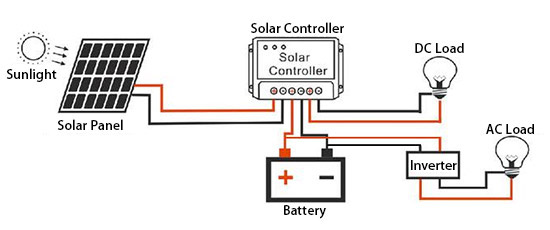For those of us who like to Do It Ourselves…

If you have been thinking of installing solar panels on your roof and are interested in saving money by doing it yourself, here are tips you should consider, and now is the time.
When you go solar, you are not just saving money on your energy bills—you are also taking a stand against climate change. Installing a solar system is not as difficult as it sounds.
There are steps involved, but they are all straightforward and easy to understand. But it is not as simple as installing panels and calling it a day. You have to consider other factors like your roof and installation location, also the type of system you are installing. And once you get that all figured out, you will need to itemize the components required for the solar project is complete.
Solar Components Required
If you are looking to install your own solar panel system, here is what you will need:
1. Solar panel
2. Inverter
3. Solar charge controller
4. Batteries
5. Cables
6. Support rack
Design requirements.
There is a need to decide on the number of panels and batteries that you’ll need for your system. The more panels and batteries you have, the more power they can produce for your house. If you’re just getting started with solar systems, we recommend starting with one or two panels and one set of batteries or small plug-and-play solar home systems SHS.
Once you’ve decided on how many panels and batteries you want, make sure that they’re compatible with each other; this ensures that everything will work properly once installed. Next, determine where exactly you’ll put them on your roof: if possible, try to position them close together so there’s enough space between them for air circulation around all sides of each panel; this will allow them to work more efficiently over time as well as keep them protected from extreme wind, etc.
There are many ways to install a solar system. The most common way is to hire a professional installer. However, you can also do it yourself if you have the right tools and know-how.
Here are four steps to get started:
1) Choose your solar panel size: 12V or 24V. This is a pa ssive device that converts sun radiation to DC power to charge your battery, it determines how much energy your system can generate from the sun. it is rated in Watt.
ssive device that converts sun radiation to DC power to charge your battery, it determines how much energy your system can generate from the sun. it is rated in Watt.
2) Choose your inverter: An inverter is a device that converts energy on the battery from DC power to AC power to operate your conventional appliances like TV, Bulbs, fans, etc. An inverter is rated in VA or Watt. You can purchase one at an electronics store or online.
3) Install the solar charge controller: This device interfaces between the Solar panel and the battery in other to monitor and control the charging and discharging of the battery, without the charge controller, the battery will be overcharged and over-discharged thereby damaging the battery. a charge controller is rated in Volts and Amp
4) Install the batteries in their respective slots on top of each other so they can’t touch each other or their sides—this is important because it helps prevent corrosion from within! And make sure they’re fully charged before installation— the battery stores the energy generated from the sun and, it determines how long your system can operate when there is no sunlight.
Conclusion
For such aforementioned reasons, we would advise you to engage professional solar installers to assist you in the design and installation of your solar system most importantly for your safety and to avoid troubles, and also to get max reliability and efficiency from your solar system.
Actually, installation of a solar system is not just to make a connection and tight screws, absolutely no! There are two important studies to be done before installation, it is the design and the economic feasibility study. As the solar system has a considerable capital cost, therefore, you have to know the energy requirements of your appliances, what will be the electricity bill saved? What will be the return on investment? And much more questions that we have to have answers to before installing the solar system, and you will need an expert to provide the answers to these questions.

